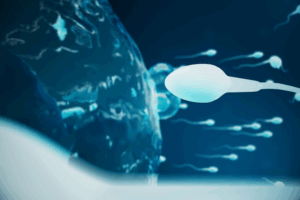
Gene therapy for azoospermia treatment
Introduction Male infertility, especially caused by azoospermia, affects millions of men worldwide. For those suffering from non-obstructive azoospermia, treatment options have been limited. However, thanks

Zero Sperm Count in the USA, also known as azoospermia, is when no sperm appears in a man’s semen. This condition can severely affect male fertility, making natural conception challenging or impossible. While azoospermia is a serious diagnosis, understanding its causes, diagnosis, and potential treatment options offers hope for individuals and couples dealing with infertility.
Zero sperm count, Zero Sperm Count in the USA., or azoospermia, occurs when sperm are absent in the ejaculate. Since sperm are essential for fertilization, a lack of them makes natural conception impossible. There are two primary types of azoospermia:
Numerous factors can cause azoospermia, from genetic conditions to lifestyle choices. Identifying the underlying cause is crucial to determine the appropriate treatment. Some common causes include:
If a man is struggling to conceive and suspects a sperm count issue, doctors typically perform a series of tests to diagnose the problem. These steps may include:
Treatment for azoospermia depends on the underlying cause. Various options, from surgery to assisted reproductive technologies (ART), help men with zero sperm count have children. Common treatment options include:
: For non-obstructive azoospermia, sperm may be retrieved directly from the testicles through TESE. The sperm can then be used for in vitro fertilization (IVF) or intracytoplasmic sperm injection (ICSI).
If hormonal imbalances cause azoospermia, hormone therapy can help restore sperm production. Drugs like clomiphene citrate and gonadotropins stimulate sperm production in men with low testosterone or other hormonal deficiencies.
Zero Sperm Count in USA. Even if sperm production isn’t restored, men with azoospermia can still have children through ART. Sperm retrieval methods like TESE or sperm aspiration can provide sperm for IVF or ICSI, where a single sperm is injected directly into an egg, overcoming male infertility issues.
Improving overall health through lifestyle changes—such as quitting smoking, reducing alcohol intake, improving diet, and managing stress—may help boost sperm production in some cases. Additionally, medications to treat infections, varicoceles, or other underlying health conditions may be beneficial.

Introduction Male infertility, especially caused by azoospermia, affects millions of men worldwide. For those suffering from non-obstructive azoospermia, treatment options have been limited. However, thanks

Azoospermia is one of the most challenging causes of male infertility, often leaving men with few options and couples struggling to conceive. But today, an
PROLISTEM® is a Patented Formula
Copyright © 2025 Prolistem®